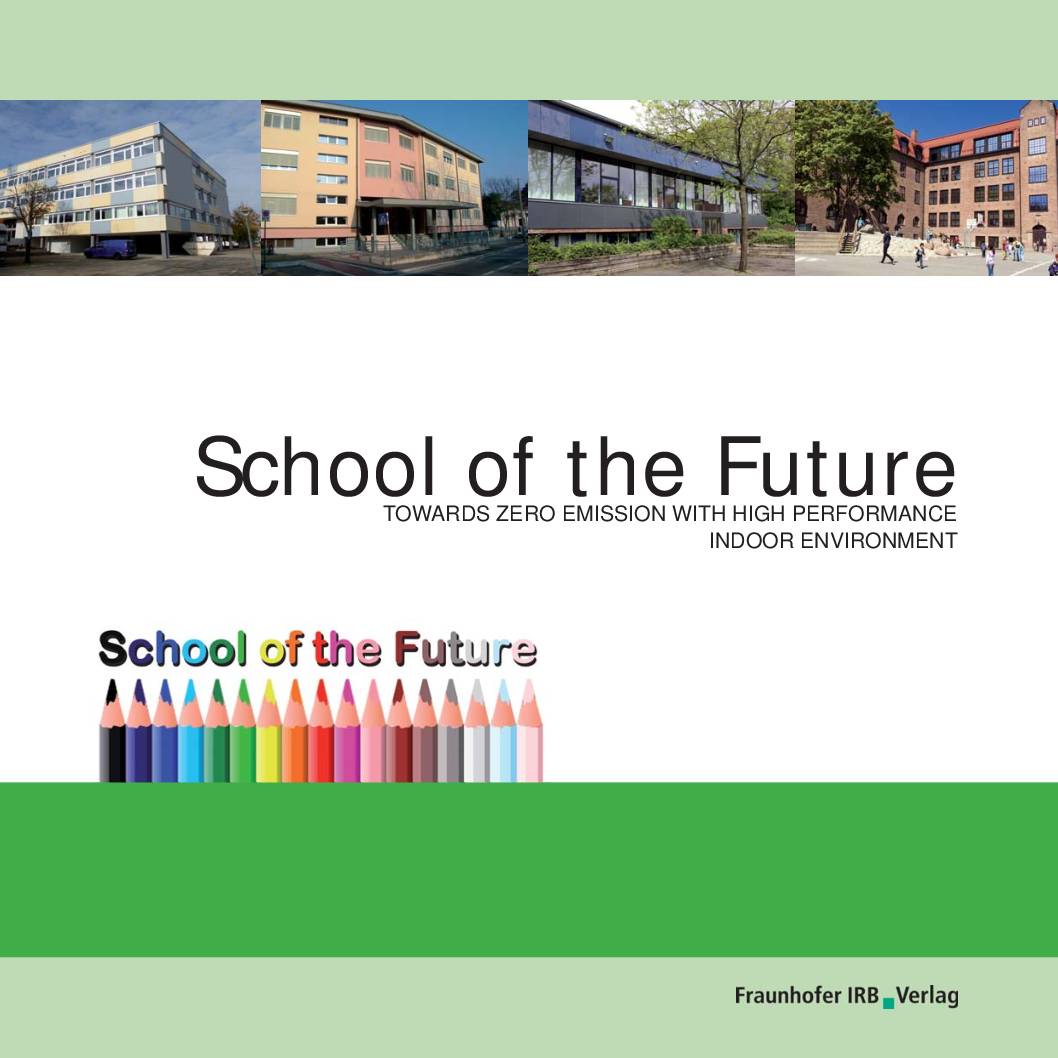In 2011, the ‘School of the Future’ project was launched as a demonstration project in the Seventh Framework Programme of the European Union. The related call for applications focused on the ‘Demonstration of Energy Efficiency through Retrofitting of Buildings’. Project goals included design, implementation and evaluation of holistic renovation measures in buildings with a high replication potential for large regions of Europe. The aim was to reduce the use of heating energy for the thermal conditioning of spaces in selected buildings by at least 75% through appropriate retrofitting measures. Accompanying measures were to include long-term measurements and an initiative to improve user behaviour. As the associated working programme was developed in cooperation with the Energy-Efficient Buildings – European Initiative of the European Construction Technology Platform (ECTP), partners from industry were encouraged to participate in the project.
The project proposal ‘School of the Future’ met these requirements, as the project focused on the renovation of four school buildings in four European countries with different climates. In addition to the public sector building owners, five research institutions and four industry partners joined the project. In all of the four schools, the retrofits comprised measures to improve the building envelope, the building services systems and the use of renewable energy. The energy objectives defined by the project partners are as follows:
reduction of the heating energy use by 75% (as defined in the call);
reduction of the total energy use by factor 3 (i.e. by two thirds).
4 demonstration buildings of the ‘School of the Future’ project
The total energy use includes space heating, water heating (DHW), ventilation, lighting and the residual use of electricity in buildings. None of the four school buildings needed cooling. The scope of the project included a monitoring phase of at least twelve months during which the energy consumption of the retrofitted buildings was measured. Subsequently, the measurements were continued by the building owners.
In addition to enhancing energy efficiency, the project also dealt with indoor comfort. Here, the target was to:
improve the indoor environment to enhance pupils’ performance.
The analysis of the induced change in the indoor climate was based on short-time measurements and questionnaires. The four retrofitted schools are no zero energy schools, as this standard could not be realised without exceeding the envisaged energy-relevant investment costs of 100 €/m². Nevertheless, these schools use significantly less energy than specified in the national requirements for building renovation, thus leading the way towards even more energy-efficient school buildings. The further work packages in the project (the retrofit guidelines, for instance) demonstrate ways towards zero emission buildings or even buildings that generate surplus energy (energy surplus buildings).
The project was based on three pillars: demonstration, research, and dissemination. The outcome of the individual areas of work is summarised in this brochure. All results derived from the project are available on the project’s website www.school-of-the-future.eu. The successful cooperation of the thirteen project partners was terminated according to schedule in January 2016.
Share this

Sectors: Buildings, Cross cutting, Renewables
Country / Region: Denmark, Europe, Germany, Italy, Norway
Tags: building types, case study, demonstration projects, domestic heating, energy, energy efficiency, global climate, heating, implementation, industry, program evaluations, project goals, projectsKnowledge Object: Publication / Report
Published by: Fraunhofer IRB Verlag
Publishing year: 2016
Author: Heike Erhorn-Kluttig, Sarah Doster, Hans Erhorn
